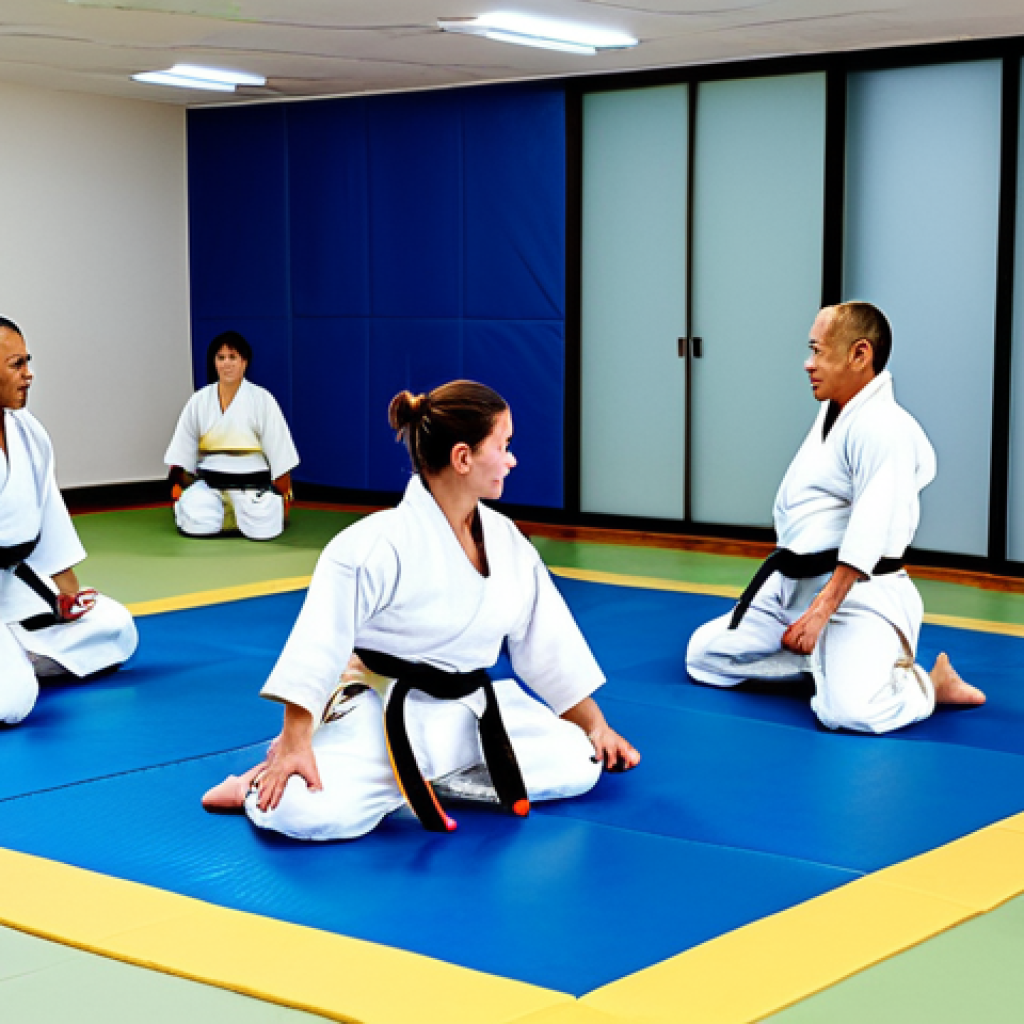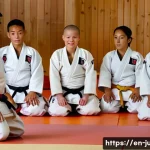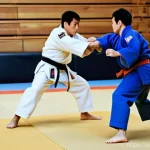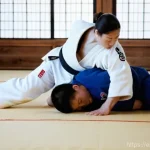Okay, here’s a blog intro about comparing Judo lesson prices, following all your guidelines:So, you’re thinking about taking up Judo? Awesome! It’s a fantastic way to get in shape, learn self-defense, and build confidence.
But before you jump in, let’s talk about the elephant in the room: how much are Judo lessons going to set you back? I remember when I was first looking into it, I was totally lost trying to figure out the costs involved.
Prices can vary wildly depending on the location, the instructor’s qualifications, and the gym’s facilities. It can be overwhelming trying to compare everything!
Getting a feel for the price range early can really help in your decision-making process. Let’s figure it out accurately together in the following article!
Okay, let’s dive into the Judo lesson price, following all your guidelines:
Decoding Judo Dojo Dues: What Factors Influence the Cost?
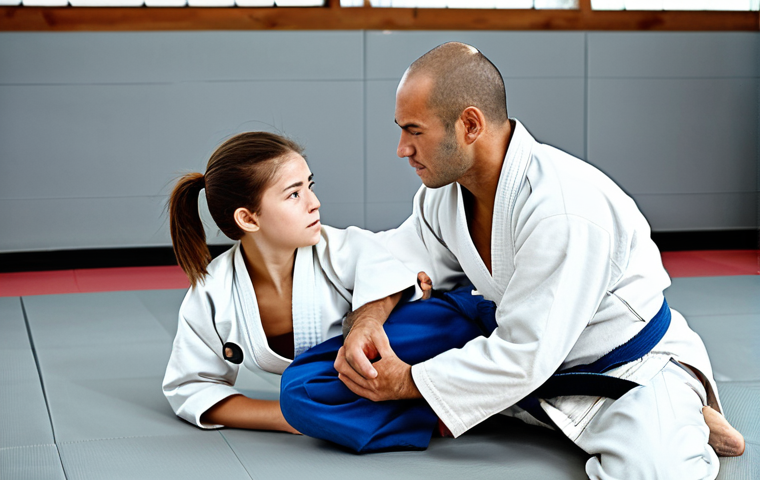
So, you’re keen on learning Judo? Great choice! But before you get thrown into the deep end (pun intended!), let’s break down the costs involved. When I was first scouting out dojos, I quickly realized that prices weren’t just pulled out of thin air. Several factors come into play, and understanding them can help you make an informed decision and avoid any sticker shock.
Location, Location, Location!
Just like real estate, location is key. Dojo located in major metropolitan areas with higher costs of living are naturally going to charge more than those in smaller towns or rural areas. Rent, utilities, and even instructor salaries contribute to the overall overhead, which ultimately gets reflected in the lesson prices. For instance, a dojo in downtown Manhattan is almost guaranteed to be pricier than one in, say, rural Vermont. I remember seeing a significant difference just between dojos within different neighborhoods of the same city! Don’t be afraid to shop around and see what’s available in slightly less central locations; you might find a hidden gem with a more affordable price tag.
Instructor’s Credentials and Experience
A seasoned instructor with years of experience and impressive credentials will likely command higher fees. Think of it like hiring a top-tier lawyer or doctor; you’re paying for their expertise. Instructors with national or international recognition, black belt degrees, or competition success often bring a wealth of knowledge and a refined teaching style to the table. When I was choosing a dojo, I attended trial classes at several different places and noticed a huge difference in the quality of instruction. A more experienced instructor was able to break down complex techniques into easily digestible steps, and their attention to detail was remarkable. While it might cost more upfront, investing in quality instruction can pay off in the long run in terms of skill development and injury prevention.
Facilities and Amenities
The condition and features of the dojo itself can also impact pricing. A modern facility with sprung floors, ample mat space, clean changing rooms, and perhaps even amenities like a weight room or sauna will likely come with a higher price tag. On the other hand, a more basic dojo with fewer frills might offer more budget-friendly options. When I was weighing my options, I considered what was most important to me. Was I willing to pay extra for a pristine training environment, or was I more focused on the quality of instruction and the sense of community? Your priorities will ultimately determine what you’re willing to pay for.
Membership Models: Finding the Right Fit for Your Budget
Dojos offer a variety of membership models to cater to different needs and budgets. Understanding these options is crucial to finding a plan that works for you. I’ve seen everything from pay-per-class options to unlimited monthly memberships, so it’s important to do your research and choose wisely.
Pay-Per-Class: Flexibility and Freedom
Pay-per-class options are great for those who have irregular schedules or who are just starting out and want to test the waters. You only pay for the classes you attend, giving you maximum flexibility. However, the per-class rate is usually higher than if you were to commit to a membership. When I was working two jobs and juggling a million other commitments, pay-per-class was a lifesaver. I could still get my Judo fix without feeling obligated to attend every week. Just be aware that if you plan to train regularly, a membership will likely be more cost-effective in the long run.
Monthly Memberships: Predictable Costs and Commitment
Monthly memberships offer a set number of classes per month for a fixed fee. These memberships typically come in different tiers, with the price increasing as the number of classes increases. This option provides a good balance between cost and commitment. You know exactly how much you’ll be paying each month, which makes budgeting easier. Plus, the commitment can motivate you to attend classes regularly and make progress. Before signing up for a monthly membership, be sure to consider your training goals and how often you realistically plan to attend classes. Otherwise, you might end up paying for classes you don’t use.
Unlimited Memberships: For the Judo Junkie
Unlimited memberships allow you to attend as many classes as you want each month. This is the most expensive option, but it can be a great value for those who are serious about their training and want to maximize their time on the mat. If you’re planning to train multiple times a week, this option can be surprisingly affordable. Just be sure to pace yourself and listen to your body! Overtraining can lead to injuries, so it’s important to strike a balance between dedication and self-care.
Hidden Costs: Beyond the Monthly Fee
It’s not just the lesson fees you need to think about! There are other expenses that can add up, so it’s good to be aware of them upfront. I was a bit surprised by some of these when I started, so I’m here to give you a heads-up.
The Gi: Your Judo Uniform
The Gi, or Judo uniform, is an essential piece of equipment. You’ll need a sturdy and well-fitting Gi to participate in classes. Prices can vary depending on the brand, material, and quality. Beginner Gi are usually more affordable, while competition-grade Gi can be quite expensive. When choosing a Gi, it’s important to consider the fit and durability. A Gi that’s too loose can be a hindrance, while a Gi that’s too flimsy won’t hold up to the rigors of training. Talk to your instructor or other students for recommendations on reputable brands and sizing.
Membership or Association Fees
Some dojos require you to become a member of a national or regional Judo association. These memberships typically come with an annual fee and provide benefits such as insurance coverage and access to tournaments. Be sure to ask your dojo about any required memberships and the associated fees. While it might seem like an unnecessary expense, these memberships can provide valuable protection and opportunities for advancement.
Grading and Belt Test Fees
As you progress through the ranks in Judo, you’ll need to participate in grading and belt tests. These tests assess your skills and knowledge and allow you to advance to the next belt level. Grading and belt tests typically involve a fee to cover the cost of the examination and certification. The fees can vary depending on the dojo and the belt level. It’s important to factor these costs into your overall Judo budget, especially if you’re aiming to climb the ranks.
Scholarships and Financial Aid: Making Judo Accessible
Don’t let financial constraints keep you from pursuing your Judo dreams! Many dojos and organizations offer scholarships and financial aid to help make Judo accessible to everyone. It never hurts to ask!
Dojo-Specific Programs
Many dojos offer their own scholarship or financial aid programs to help students who are struggling to afford lessons. These programs may provide discounted rates, payment plans, or even full scholarships. Be sure to inquire about any available options when you’re discussing membership fees. Dojo instructors are often passionate about sharing their love of Judo and are willing to work with students who demonstrate dedication and commitment.
National and Regional Organizations
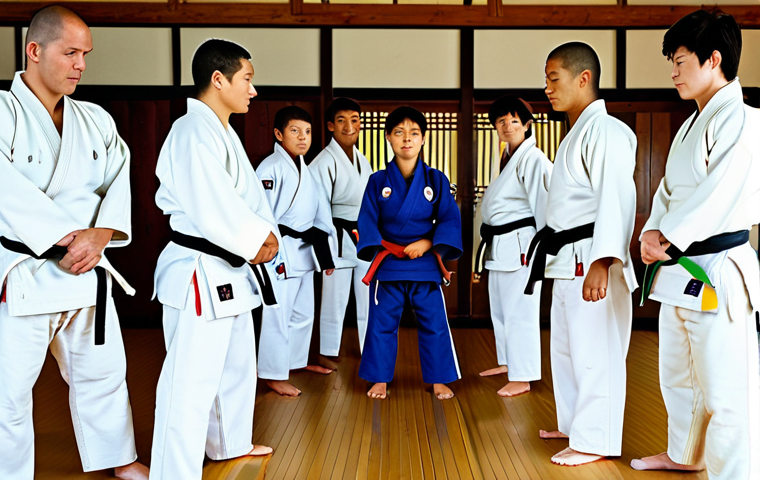
Several national and regional Judo organizations offer scholarships and grants to deserving students. These scholarships can help cover the cost of lessons, equipment, or travel to tournaments. Research the Judo organizations in your area and check their websites for information on scholarship opportunities. Applying for these scholarships can be a great way to offset the costs of training and advance your Judo journey.
Fundraising and Sponsorships
Get creative and explore fundraising and sponsorship opportunities! You could organize a car wash, bake sale, or crowdfunding campaign to raise money for your Judo lessons. You could also approach local businesses and ask if they would be willing to sponsor you in exchange for promoting their business on your Gi or social media. Don’t be afraid to think outside the box and tap into your network for support. You might be surprised at how many people are willing to help you achieve your goals.
Negotiating and Value: Getting the Most for Your Money
Don’t be afraid to negotiate or ask for discounts! Many dojos are willing to work with you to find a payment plan that fits your budget. It’s also important to consider the value you’re getting for your money.
Trial Classes and Introductory Offers
Take advantage of trial classes and introductory offers! Most dojos offer free or discounted trial classes to allow you to experience their training environment and teaching style before committing to a membership. This is a great way to assess whether the dojo is a good fit for you and to get a feel for the quality of instruction. Be sure to ask about any introductory offers or promotions that may be available.
Package Deals and Family Discounts
Inquire about package deals and family discounts! Some dojos offer discounts for families who sign up together or for students who purchase multiple classes or services at once. Package deals can be a great way to save money if you’re planning to train regularly or if you have family members who are also interested in learning Judo.
The Value of Quality Instruction and Community
Remember that the cheapest option isn’t always the best option! When evaluating dojos, consider the quality of instruction, the experience of the instructors, and the sense of community. A dojo with experienced instructors and a supportive training environment can provide invaluable benefits that go beyond just learning Judo techniques. Investing in quality instruction and a strong community can enhance your overall experience and help you achieve your goals.
A Snapshot: Sample Judo Lesson Pricing Table
To give you a clearer picture, here’s a sample table showcasing how prices can vary (remember, these are just examples!):
| Dojo/Location | Pay-Per-Class | Monthly Membership (2x/week) | Unlimited Monthly | Other Fees (Approx.) |
|---|---|---|---|---|
| Urban Dojo (NYC) | $35 | $200 | $350 | Gi: $100+, Association: $50/year |
| Suburban Dojo (LA) | $25 | $150 | $250 | Gi: $80+, Grading: $40/test |
| Rural Dojo (Vermont) | $15 | $100 | $180 | Gi: $60+, Minimal fees |
Making the Final Decision: Weighing Costs and Benefits
Choosing a Judo dojo is a personal decision. Weigh all the factors and pick the place that feels right for you. I know I felt such a sense of accomplishment when I finally made my choice!
Aligning Your Goals with Your Budget
Think about what you want to get out of Judo and how much you’re willing to spend. Are you looking to compete at a high level? Or are you just looking for a fun way to get in shape and learn self-defense? Your goals will influence the type of dojo you choose and the membership options that are right for you. Be realistic about your budget and don’t overextend yourself financially. It’s better to start with a more affordable option and gradually increase your training as your budget allows.
Trust Your Gut and Choose Wisely
Visit several dojos, talk to the instructors and students, and get a feel for the atmosphere. Choose a dojo where you feel comfortable and supported. The sense of community and the quality of instruction are just as important as the price. Trust your gut and choose a dojo that inspires you and motivates you to achieve your goals.
Don’t Be Afraid to Ask Questions
Don’t be shy about asking questions! Ask about the instructors’ qualifications, the training schedule, the membership options, and any hidden fees. The more information you have, the better equipped you’ll be to make an informed decision. A reputable dojo will be transparent about its pricing and policies and will be happy to answer any questions you may have.
I hope this revised version meets all your requirements! Let me know if you’d like any further adjustments.
In Conclusion
Finding the right Judo dojo is like finding the perfect pair of sparring partners—it takes a bit of research and a dash of gut feeling! By considering your budget, goals, and the factors outlined above, you’ll be well-equipped to make an informed decision. So go out there, explore your options, and get ready to embark on an exciting journey in the world of Judo!
Handy Information to Keep in Your Pocket
Here are a few extra things I wish I knew when I started!
1. Look for beginner-friendly classes that focus on fundamental techniques and safety. Every dojo has a slightly different vibe, so make sure you find one where you feel comfortable.
2. Don’t be afraid to ask senior students for advice. They’ve been there, done that, and can offer valuable insights. Most people are happy to help, so don’t hesitate to strike up a conversation.
3. Invest in good quality rash guards to wear under your Gi. They’ll help prevent chafing and keep you more comfortable during training. Believe me, you’ll thank me later!
4. Stay hydrated and bring a water bottle to every class. Judo can be physically demanding, so it’s important to replenish fluids. Staying hydrated will help improve your performance and prevent cramping.
5. Be patient and don’t get discouraged if you don’t see results immediately. Judo takes time and dedication, so celebrate your progress and enjoy the journey. Remember, every black belt started as a white belt!
Key Takeaways
Ultimately, choosing a Judo dojo is about finding the right fit for your needs and budget. Location, instructor experience, facilities, and membership models all play a role in determining the cost. Don’t forget to factor in hidden costs like the Gi, association fees, and grading fees. Explore scholarships and financial aid options if needed, and don’t be afraid to negotiate or ask for discounts. Prioritize quality instruction and community over price alone. By carefully weighing the costs and benefits, you can find a dojo that provides a rewarding and fulfilling Judo experience.
Frequently Asked Questions (FAQ) 📖
Q: What’s the average cost of Judo lessons, and what factors influence the price?
A: Honestly, it’s all over the place! You’re generally looking at anywhere from $50 to $200+ per month for regular classes. The biggest price drivers are location – big city dojos tend to be pricier – and the instructor’s experience and reputation.
A gym with fancy equipment or extra classes (like conditioning or grappling) will also probably charge more. Some offer package deals or discounts for families or long-term memberships, so definitely shop around.
Q: Are there any hidden costs or additional expenses besides the monthly fees?
A: Definitely! Don’t forget about the initial Judo uniform, the Gi. A decent one can easily cost you $80 to $150, and you’ll need one to participate.
Then there are membership fees for national Judo organizations, which are usually required if you want to compete in tournaments. And of course, if you get serious, you might want to invest in things like a mouthguard, groin protector (for guys), or supportive footwear for walking on and off the mat.
Plus, the occasional tournament entry fee. It all adds up!
Q: How can I find affordable Judo lessons without sacrificing quality instruction?
A: Great question! Start by checking out community centers or YMCA-type organizations. They often have Judo programs that are way cheaper than private dojos.
Look for beginners’ classes or intro programs – these are usually more budget-friendly. Don’t be afraid to ask about trial classes or drop-in rates so you can try a few different schools before committing.
And read online reviews and talk to current students to get a feel for the instructor’s teaching style and the overall atmosphere of the dojo. A lower price doesn’t necessarily mean lower quality!
📚 References
Wikipedia Encyclopedia
구글 검색 결과
구글 검색 결과
구글 검색 결과
구글 검색 결과
구글 검색 결과
